Forest Health Highlights
in Oregon, 2002
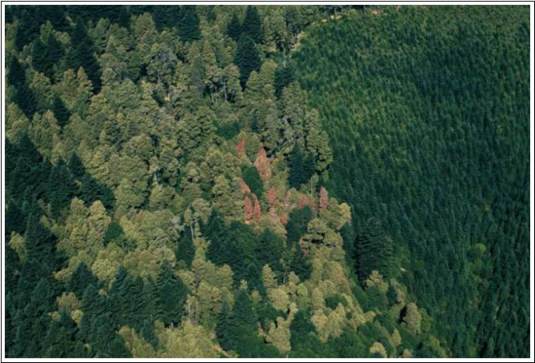
![]() 2002 Highlights for Alaska, California, or Washington
2002 Highlights for Alaska, California, or Washington ![]() Forest
Health webpage
Forest
Health webpage


Joint Publication of:
Oregon Department of Forestry
USDA Forest Service, Pacific Northwest Region
R6-NR-FID-TP-08-03
Portland, Oregon
August 2003
Contributors:
1 U.S. Department of Agriculture, Forest Service
2 Oregon Department of Forestry
go to a more printable PDF version (3.2
MB) of this document
Introduction
Insects and disease pathogens cause significant tree mortality, growth loss, and damage to large volumes of potential wood products each year. They reduce management options for landowners and contribute to hazardous forest fire conditions. However, these disturbance agents are a natural and necessary part of forest ecosystems. They support ecological processes such as decomposition and nutrient cycling. They create openings, enhance tree species diversity, and provide food and habitat that many animals depend on. A healthy forest is not free of insects, diseases, disturbances, and tree defects.
This report serves to inform readers about major insect and disease activity levels in Oregon in 2002. For additional information to locate or identify specific damage or to obtain information on management techniques to reduce impacts from Forest Health Protection, contact the Oregon Department of Forestry's Forest Health Program (see contacts).
![]() 2002 Highlights for Alaska, California, or Washington
2002 Highlights for Alaska, California, or Washington ![]() Forest
Health webpage
Forest
Health webpage
Aerial Survey

Figure 1 - Digital aerial sketch mapping equipment in plane; photo by Mike McWilliams, Oregon Department of Forestry.
Oregon and USDA Forest Service cooperators have conducted an aerial sketchmapping program for more than fifty years. Prior to the 2001 season, the methodology had changed very little. Observers looked out the aircraft window and recorded the location of damage on a paper map.
In 2001, we implemented a digitally assisted sketchmapping system in much of western Oregon. In 2002, digital sketchmapping was used throughout the state, as well as automated flight following. Observers now record damage locations on a touch-sensitive computer screen displaying the airplane's current position on user-defined electronic background maps. This system utilizes real-time global positioning and eliminates problems associated with observer disorientation.
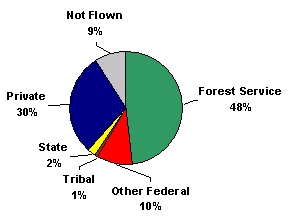
Figure 2 - Forested acres in Oregon surveyed by air in 2002, by land ownership category
For more information about our aerial survey program, please visit: www.fs.fed.us/r6/nr/fid/health.shtml. This site is updated annually with the latest information on exotic pest problems, insect and disease outbreaks, and Oregon and Washington forest health trends. Color photos of pests and their resulting damage are included.
Aerial Survey data is available from this Forest Service Pacific Northwest Region website: www.fs.fed.us/r6/nr/fid/data.shtml.
![]() 2002 Highlights for Alaska, California, or Washington
2002 Highlights for Alaska, California, or Washington ![]() Forest
Health webpage
Forest
Health webpage
Drought Conditions
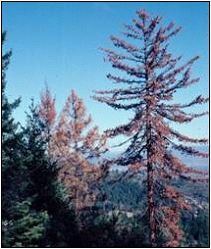
Figure 3 - Dying conifers on a drought-prone site in southwest Oregon; photo by Oregon Department of Forestry.
Areas of eastern and southwestern Oregon suffered another year of below normal precipitation in 2002. The pattern of dry conditions started in the summer of 2000 and appears likely to continue into 2003. Tree mortality related to drought is often concentrated in low elevation areas and frequently involves multiple tree species dying on the same site (Figure 3). Those trees most susceptible to drought effects are usually growing on poor sites in overstocked stands. Bark beetle outbreaks are often correlated with significant drought events and this was certainly the case in 2002.
![]() 2002 Highlights for Alaska, California, or Washington
2002 Highlights for Alaska, California, or Washington ![]() Forest
Health webpage
Forest
Health webpage
Insects
The 2002 aerial survey detected significant increases in tree mortality from bark beetles. Overall acreage with bark beetle damage in Oregon almost tripled from 116,194 acres in 2001 to 347,452 acres in 2002. Much of this increase in tree mortality is related to the effects of drought on tree vigor and resistance to bark beetle attack. Drought related mortality was most apparent in Douglas-fir, true firs, sugar pine and ponderosa pine. Lodgepole pine also showed an increase in acres with mortality, but stand conditions rather than drought tend to drive bark beetle outbreaks affecting this tree.
Outbreaks of tree defoliators increased in 2002, primarily as a result of a new pandora moth outbreak in pines and increased defoliation of red alder by the western tent caterpillar. The four year-old Douglas-fir tussock moth outbreak in eastern Oregon declined significantly in 2002 and appears to be in the last phases of collapse. There was also an increase in sub- alpine fir stands declining from balsam woolly adelgid infestation detected by the annual aerial survey.
Douglas-fir Beetle
Flatheaded Fir Borer
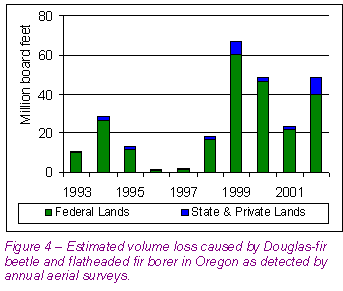
Figure 4 - Estimated volume loss caused by Douglas-fir beetle and flatheaded fir borer in Oregon as detected by annual aerial surveys.
Douglas-fir mortality spiked upwards in 2002 driven largely by increased activity of Douglas-fir beetle and flatheaded fir borer in drought affected areas (Figure 4). One area with a major increase in flatheaded fir borer infested trees was around Grants Pass (Figure 5). Douglas-fir mortality also remained high in northeast Oregon due to a Douglas-fir beetle outbreak that started with trees damaged by storms and fire in 1996 (Figure 6). Another Douglas-fir beetle outbreak in western Oregon could develop in 2004 as a result of fresh
blowdown in Linn and Lane Counties in the winter of 2002. In southwestern Oregon, an abundance of fire-damaged but living Douglas-fir could result high beetle populations and tree mortality for several years.
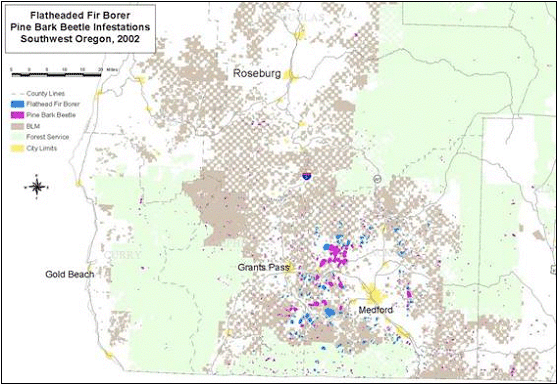
Figure 5 - Distribution of Douglas-fir mortality attributed to flatheaded fir borer and pine mortality attributed to bark beetles in southwest Oregon as detected by the annual aerial survey.
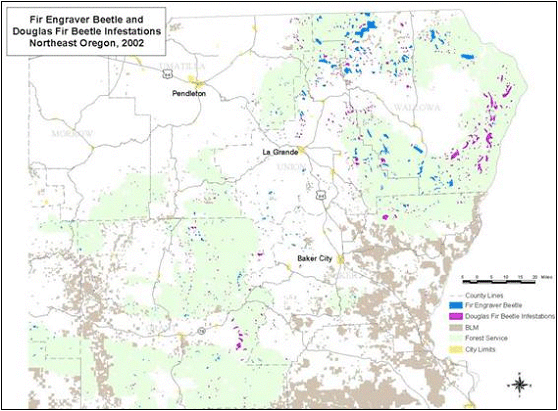
Figure 6 - Distribution of Douglas-fir and true fir mortality in northeast Oregon as detected during annual aerial surveys.
Fir Engraver Beetle
True fir mortality from fir engraver beetle attacks increased dramatically in some drought- affected areas of Oregon. One of the sites with increased beetle activity was the fringe of the Willamette Valley where grand fir is often established on marginal growing sites. The largest fir engraver outbreak was in northeast Oregon, primarily on National Forest Land (Figure 6). Fir engraver beetle outbreaks will continue in drought prone areas until normal patterns of precipitation return.
Mountain Pine Beetle
Western Pine Beetle
Ips species
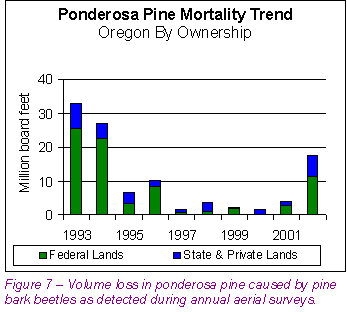
Figure 7 - Volume loss in ponderosa pine caused by pine bark beetles as detected during annual aerial surveys.
Ponderosa pine mortality from bark beetle attacks increased throughout Oregon in 2002 (Figure 7). The principle reason for this rise is the increased susceptibility of drought- stressed trees to bark beetle attack. Most of the tree mortality is occurring in overstocked stands on drought prone sites (Figure 8). One area of relatively concentrated pine mortality is around Grants Pass in southwestern Oregon (Figure 5). Continuing drought and an abundance of fire-damaged trees in southwest Oregon could mean higher levels of ponderosa pine mortality in 2003 and beyond.
Mountain pine beetle outbreaks in lodgepole pine stands are generally not driven by drought and usually continue until most of the trees >6" in diameter are killed. Outbreaks often operate on a landscape level and this pattern of tree mortality usually results in a large accumulation of fuels and increased risk of fire. Lodgepole pine mortality from mountain pine beetle attack increased in Oregon in 2002 (Figure 9). Most of this lodgepole mortality is concentrated along the east slope of the Cascades on federal land. Outbreak areas can be found from southern Deschutes County to Wasco County in the north (Figure 10).
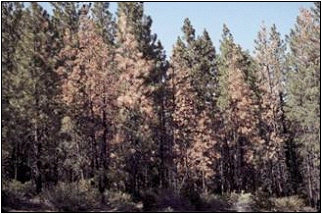
Figure 8 - Ponderosa pines killed by pine engraver beetles along Century Drive in Central Oregon in 2002; photo by Oregon Department of Forestry.
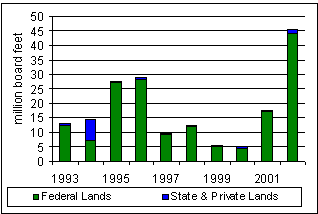
Figure 9 -- Volume loss caused by mountain pine beetle in lodgepole pine as detected during annual aerial surveys.
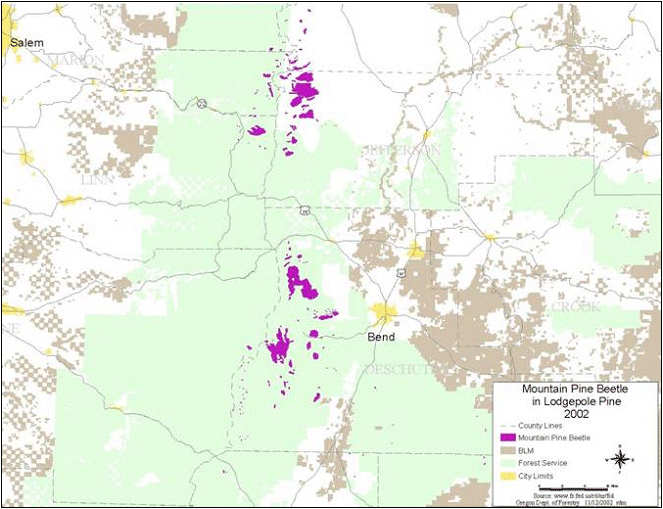
Figure 10 -- Distribution of lodgepole pine mortality in central Oregon
as detected during annual aerial surveys.
Douglas-fir Tussock Moth

Figure 11 - Acres infested with Douglas-fir tussock moth in Oregon as detected during annual aerial surveys.
The Douglas-fir tussock moth is a native defoliator of Douglas-fir and true firs. Past outbreaks have caused significant defoliation and tree mortality. Outbreaks have typically lasted four years. This year marked the fourth year or collapsing phase of the current northeast Oregon outbreak (Figure 11). The total area of defoliation dropped from 29,149 acres in 2001 to 9,395 acres in 2002. Little or no tussock moth defoliation is expected in 2003.
Pandora Moth
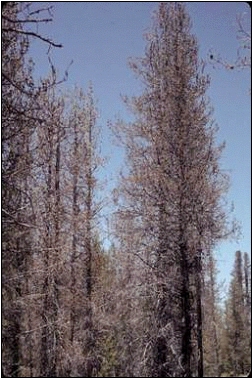
Figure 13 - Lodgepole pine severely defoliated by pandora moth in 2002; photo by Oregon Department of Forestry.
In the past, both Deschutes and Klamath Counties have experienced repeated outbreaks of pandora moth defoliation in ponderosa and lodgepole pine stands. This insect has a two year life cycle and tree defoliation only occurs every other year. In 2002, an aerial survey detected 24,447 acres of pandora moth defoliation in lodgepole pine stands in northern Klamath County (Figure 12). Defoliation was surprisingly severe for the first year of an outbreak and is clearly visible along Highway 97 near the Diamond Lake Junction (Figure 13). Usually Pandora moth outbreaks do not cause tree mortality, but the heavy defoliation experienced in 2002 means that tree condition should be monitored. The next episode of tree defoliation will occur in 2004 if this pandora moth outbreak continues.
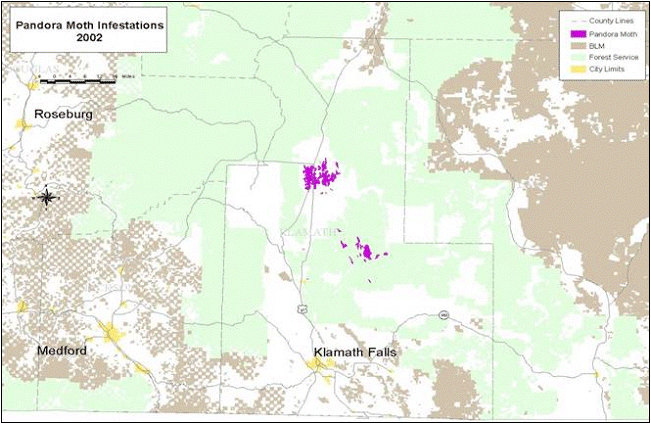
Figure 12 - Areas of lodgepole pine defoliated by pandora moth in northern Klamath County as detected by aerial surveys.
Western Tent Caterpillar

Figure 14 - Red alders defoliated by western tent caterpillar in Clatsop County; photo by Oregon Department of Forestry.
Approximately 3,667 acres of red alder growing along Highway 26 in Clatsop County were defoliated by the western tent caterpillar in 2002 (Figure 14 and 15). This represents a substantial increase from the 1,034 acres defoliated in 2001 and makes it the largest tent caterpillar outbreak to occur in Oregon in several decades. It is likely the tent caterpillar population will collapse in 2003 from the effects of disease and parasites.
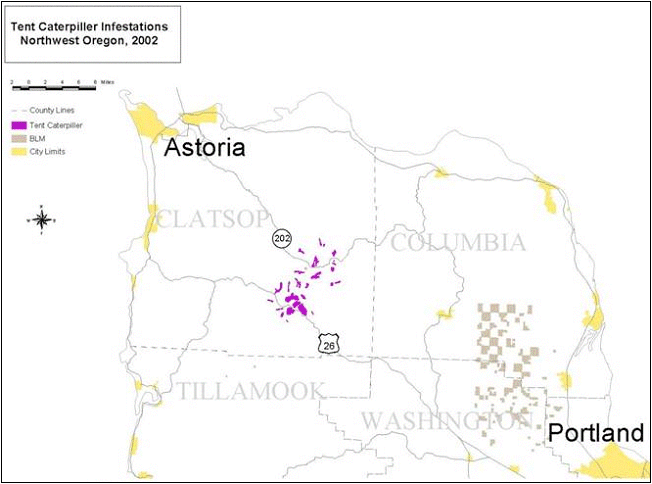
Figure 15 -- Areas of red alder defoliation by western tent caterpillar in Clatsop County as detected by aerial surveys.
Balsam Woolly Adelgid
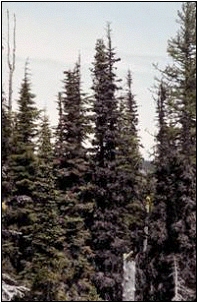
Figure 16 - A blackish crown color in subalpine fir is an indicator of decline from balsam woolly adelgid infestation.
The Balsam Woolly Adelgid is an introduced insect that has spread through subalpine fir and silver fir stands causing declining tree vigor and mortality. The tops of badly infested fir develop a blackish appearance, as lichens become more visible in the crown than healthy green foliage (Figure 16). In 2002, the aerial survey detected 35,328 acres of infested true fir stands, a significant increase from the 16,700 acres detected in 2001.
Diseases
Although Swiss needle cast and sudden oak death drew much attention during 2002, several other important diseases continue to affect Oregon's forests. Laminated root rot is the most widespread and destructive root disease in the State. Other native root diseases such as black stain root disease, Armillaria root disease, and Annosus root disease cause considerable damage in certain areas, particularly in southern and eastern Oregon. The effects of these root diseases on forests may be positive or negative, depending on management objectives.
Two long-established non-native diseases, Port-Orford-cedar root disease and white pine blister rust, continue to cause extensive damage to Port-Orford-cedar and five-needle pines, respectively. Production and planting of genetically resistant trees is offsetting some of the losses to these diseases.
Sudden Oak Death
Sudden oak death (SOD), caused by the non-native pathogen Phytophthora ramorum, is a new disease that has caused considerable mortality of tanoak, coast live oak, California black oak, and more than 20 other plant species in California since 1995. In Oregon, the pathogen has naturally infected seven plant species (Table 1). The pathogen can kill trees by causing lesions on the main stem (Figure 17), or it can cause leaf blight and shoot dieback (Figure 18). P. ramorum is known to occur only in California, Oregon, and in a few European countries. It is considered non-native (or exotic) to these places, and its origin is unknown.
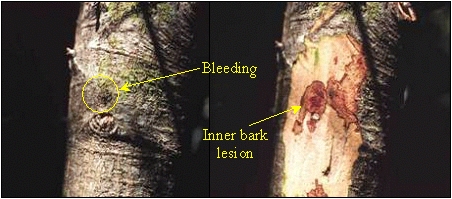
Figure 17 -- Stem lesion on tanoak caused by Phytophthora ramorum; photo by Oregon Department of Forestry.
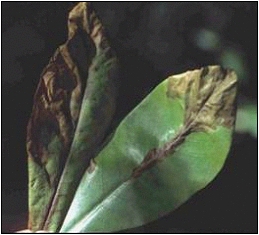

Figure 18 - Leaf blotch (left) and shoot dieback (right) on Pacific rhododendron caused by Phytophthora ramorum; photo by Oregon Department of Forestry.
Table 1 - Plant species naturally infected by Phytophthora ramorum in Oregon
(** indicates species that have been killed by P. ramorum).
| Common name | Scientific name | Type of damage |
| Tanoak (Tanbark oak)** | Lithocarpus densiflorus | Stem canker, leaf spot, twig dieback |
| Pacific Rhododendron** | Rhododendron macrophyllum | Stem canker, leaf blotch, twig dieback |
| Evergreen Huckleberry** | Vaccinium ovatum | Stem canker, leaf blotch, twig dieback |
| Oregon Myrtle | Umbellularia californica | Leaf spot |
| Cascara (Buckthorn) | Cascara purshiana | Leaf spot |
| Salmonberry | Rubus spectabalis | Leaf spot |
| Poison Oak | Rhus diversiloba | Stem canker |
P. ramorum was first discovered in Oregon by aerial survey in July 2001 at five locations near the city of Brookings. As soon as it was discovered, the Oregon Department of Agriculture (ODA) issued an emergency quarantine an established a 9-square-mile regulated area to prevent movement of the pathogen from the infested sites. By the end of 2001, nine sites had been discovered, encompassing 40 acres. All sites were located within the 9-square-mile area near Brookings.
In October 2001, state and federal agencies and private landowners began to eradicate the pathogen by cutting and burning all host plants on infested sites. Federal funds were secured to help landowners pay for the eradication work. By summer of 2002, all nine sites had been cut and burned.
During 2002, 12 additional SOD sites were discovered in Oregon. These sites were small and in close proximity to the original nine sites. By the end of 2002, all of these sites were cut and burned in the ongoing eradication project. All known SOD sites still are located within the 9 square mile regulated area delineated by ODA (Figure 19).
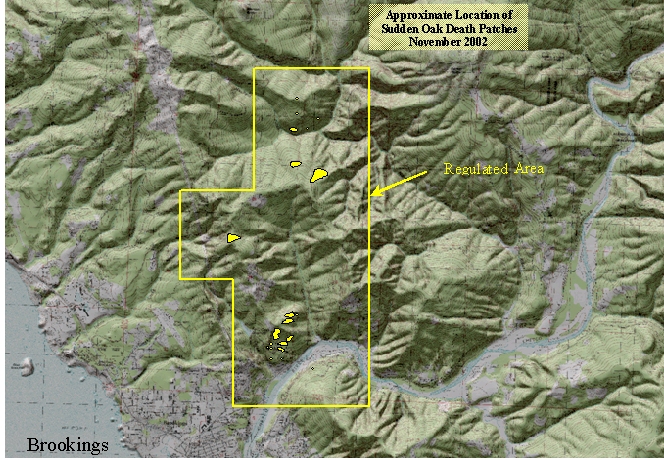
Figure 19 - Location of sudden oak death patches in Oregon and the area regulated by ODA and USDA-APHIS quarantines. All areas shown have been cut and burned.
Surveys within and near the infested sites in Oregon show that the pathogen has survived the cut and burn treatment on several sites, and has infected tanoak stump sprouts. All symptomatic stump sprouts of host plant species are being destroyed to further reduce inoculum. Although not yet eradicated, the pathogen occurs rarely and at extremely low levels, suggesting that the eradication effort thus far has effectively suppressed pathogen populations. Intensive monitoring of vegetation, soils, and stream water is ongoing. Follow-up treatments to destroy infected plants on these sites likely will continue for several years.
Phytophthora ramorum poses a significant and uncertain threat to Oregon's forest ecosystems. If the pathogen spreads within the State, regulations will seriously affect the timber and nursery industries. Sustained support of research, monitoring, management, and regulatory programs is essential to prevent or reduce unwanted impacts.
For more information: http://www.suddenoakdeath.org/
Swiss Needle Cast
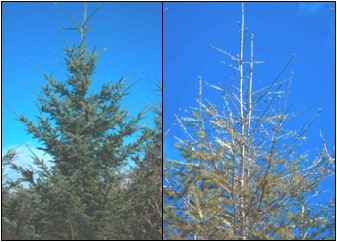
Figure 20. -- Douglas-fir tree damaged by Swiss needle cast (right) and a healthy tree (left)photo by Oregon Department of Forestry.
Swiss needle cast is a disease of Douglas-fir foliage caused by the fungus Phaeocryptopus gaeumannii. It causes needles to turn yellow and fall prematurely from tree, ultimately reducing tree growth and survival (Figures 20 and 21). Tree mortality is rare, occurring only after many years of defoliation. The pathogen is native to Oregon and infects only Douglas-fir. The disease is called "Swiss" needle cast because it was first described in Switzerland in the 1920's on planted Douglas-fir.
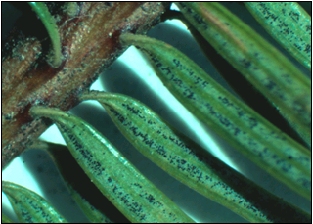
Figure 21 -- Small black fruiting bodies of the Swiss needle cast pathogen (Phaeocryptopus gaeumannii) on the underside of Douglas-fir needles; photo by Oregon Department of Forestry.
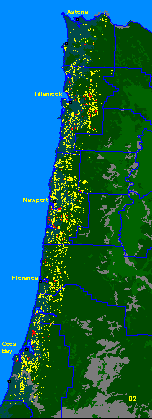
Figure 22 - Areas of Douglas-fir forest with symptoms of Swiss needle cast detected in the 2002 aerial survey.
Since the 1980's Swiss needle cast has become increasingly evident in Douglas-fir forests of the Oregon Coast Range. Disease incidence and severity have increased dramatically during this time. Recent aerial surveys show sustained damage in the Coast Range and little or no damage elsewhere on Oregon. The results of the 2002 aerial survey show a stabilization in the amount of forest with symptoms of Swiss needle cast in the north coast region, and a continued increase in the south coast area (Figures 22 and 23). Nearly one million acres of forest in Oregon are affected by this disease to some degree.
No Swiss needle cast damage was mapped in the Cascade Range in 2002, although Swiss needle cast does occur at damaging levels in some areas. Thus far the disease appears to be of concern only in a few localized areas in the Cascade Range.
Permanent plots in 10- to 30-year-old plantations in the northern Coast Range have been monitored since 1997. Based primarily on needle retention ratings, these plots show little evidence of a significant change in damage from Swiss needle cast since 1997. The overall poor needle retention in the sample population suggests a continuing severe growth reduction from Swiss needle cast. Losses in tree volume growth in the Coast Range approach 100 million board feet per year. In addition to growth loss and some mortality, Swiss needle cast reduces stand management options, hinders the development of stand structure and wildlife habitat, and increases the risk of catastrophic fire.
Current management strategies in the Coast Range rely on replacing Douglas-fir with other tree species such as hemlock, cedar, spruce, noble fir, and alder. Pre-commercial thinning of young stands is advised, while thinning of older commercial stands must be done with caution. Applications of fungicides or sulfur show some promise for control, but economics and environmental concerns may limit their practical use. Numerous research projects are coordinated through the Swiss Needle Cast Cooperative at Oregon State University.
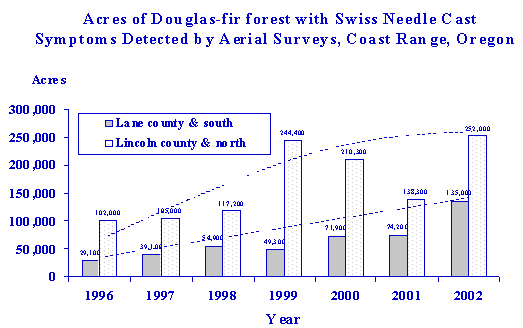
Figure 23 -- Trend in the number of acres of Swiss needle cast mapped in aerial surveys between 1996 and 2002 in the Coast range of Oregon.
![]() 2002 Highlights for Alaska, California, or Washington
2002 Highlights for Alaska, California, or Washington ![]() Forest
Health webpage
Forest
Health webpage
Other Damage
Bear Damage Survey
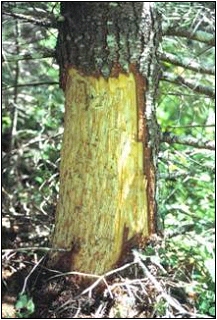
Figure 24 - Douglas-fir tree with bark peeled by a black bear; photo by Oregon Department of Forestry.
In the Pacific Northwest, black bears damage forest trees in the spring of the year by peeling the bark and eating the succulent inner tissue. If the entire circumference of the bole is peeled, the tree will die (Figure 24). Partial peeling can reduce growth rate and vigor, and introduce decay, which lowers wood quality and eventually may result in mortality.
Tree mortality surveys of have been flown annually in western Oregon since 1993 and show that the number of acres mapped with recent mortality from bear damage averages more than 20,000 acres per year. The 2002 survey showed damage levels similar to previous years (Figure 25).

Figure 25 -- Trend in bear damage in western Oregon as estimated by aerial survey
with ground verification, 1989-2002.
Ozone Monitoring
Oregon cooperates in the USDA Forest Service national ozone-monitoring program. Indicator plants are examined each year in 36 sample plots located throughout the state. To date we have not detected ozone injury in any of the Oregon plots.
![]() 2002 Highlights for Alaska, California, or Washington
2002 Highlights for Alaska, California, or Washington ![]() Forest
Health webpage
Forest
Health webpage
Contacts and Additional Information
If you have questions about forest insect and disease
activity in Oregon,
please contact one of these regional or field offices:
State of Oregon
Forest Health Management Unit
Department of Forestry
2600 State Street, Operations Building
Salem, OR 97310
(503) 945-7240 -- Marganne Allen (mallen@odf.state.or.us)
945-7396 -- Rob Flowers (rflowers@odf.state.or.us)
945-7397 -- Alan Kanaskie (akanaskie@odf.state.or.us)
945-7395 -- Mike McWilliams (mmcwilliams@odf.state.or.us)
website: http://oregon.gov/ODF/PRIVATE_FORESTS/fh.shtml
{contact information updated on June 12, 2007}
Forest Service
Forest Health Monitoring Program
Pacific Northwest Region, Natural Resources
P.O. Box 3623
Portland, OR 97208-3623
(503) 808-2976 -- Alison Nelson
email: asnelson@fs.fed.us
Forest Health Protection
Pacific Northwest Region, Natural Resources
P.O. Box 3623
Portland, OR 97208-3623
(503) 808-2913 -- Doug Daoust
email: ddaoust@fs.fed.us
website http://www.fs.fed.us/r6/nr/fid/
Blue Mountains Service Center (northeastern
Oregon)
Forestry Sciences Laboratory
1401 Gekeler Lane
La Grande, OR 97850
(541) 962-6544 -- Craig Schmitt
962-6545 -- Don Scott
962-6574 -- Lia Spiegel
clschmitt@fs.fed.us, dwscott@fs.fed.us,
lspiegel@fs.fed.us
Central Oregon Service Center
Deschutes National Forest
1645 Highway 20 East
Bend, OR 97701
(541) 383-5701 -- Andy Eglitis
383-5587 -- Kristen Fields
383-5591 -- Helen Maffei
383-5783 -- Jim Stone
aeglitis@fs.fed.us, klfields@fs.fed.us, hmaffei@fs.fed.us, jstone01@fs.fed.us
Southwest Oregon Service Center
J. Herbert Stone Nursery
2606 Old Stage Road
Central Point, OR 97529
(541) 858-6127 -- Frank Betlejewski
858-6125 -- Don Goheen
858-6126 -- Ellen
Goheen
858-6124 -- Katy Mallams
858-6123 -- Robert Schroeter
fbetlejewski@fs.fed.us, dgoheen@fs.fed.us, egoheen@fs.fed.us,
kmallams@fs.fed.us , rschroeter@fs.fed.us
Westside Service Center (western Oregon and
Washington)
Mount Hood National Forest
16400 Champion Way
Sandy, OR 97055
(503) 668-1474 -- Diane Hildebrand,
668-1475 -- Bruce
Hostetler,
668-1761 -- Ben
Smith,
668-1476 -- Keith
Sprengel,
668-1477 -- Beth
Willhite
dhildebrand@fs.fed.us, bhostetler@fs.fed.us,bsmith02@fs.fed.us,
ksprengel@fs.fed.us, bwillhite@fs.fed.us
go to a more printable PDF version (3.2
MB) of this document
![]() 2002 Highlights for Alaska, California, or Washington
2002 Highlights for Alaska, California, or Washington ![]() Forest
Health webpage
Forest
Health webpage
